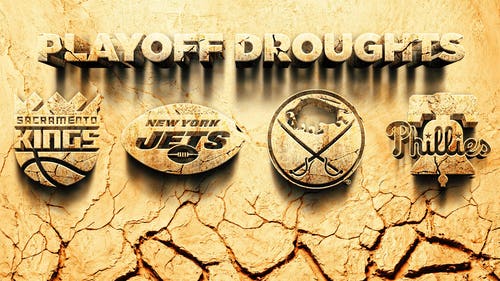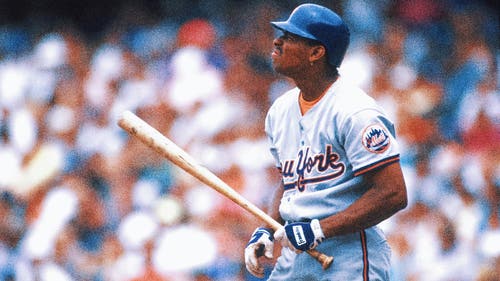
Lee's rough season is perplexing
Through 23 starts this year, Philadelphia Phillies left-hander Cliff Lee has sewn together an unremarkable, yet highly fascinating season that, to quote Winston Churchill, has truly been a riddle wrapped in a mystery inside an enigma.
Lee’s respectable 3.67 ERA, while not spectacular by his own irrationally high standards — expectations he set with a 22-3, 2.54 ERA performance in 2008 with Cleveland — is still the second lowest in the Phillies rotation behind Cole Hamels, and better than fellow Cy Young award-winner Roy Halladay.
Lee has also given Philadelphia a quality start in 14 of his outings, right in line with his career average of 59 percent and above the MLB mean of 50 percent. And he’s still giving the Phils an average of seven innings per start — higher than his career average and more than an inning above the league norm.
His control is still impeccable, too. Lee walks fewer batters per nine innings than any starter in baseball and leads the majors in strikeout-to-walk ratio.
So what’s the problem?
The problem is that Lee, who won 17 games last year, is 3-7 on the season — and that's including Sunday's victory over the Nationals — putting him in line for his lowest win total since 2007, when he only pitched 97 1/3 innings and still won five games despite having an ERA north of 6.00.
In fact, Lee is only the fourth pitcher in the live-ball era to have three or fewer wins despite having an ERA lower than 3.95 in at least 23 starts. (The latest was John Dopson, who went 3-11 with a 3.04 ERA in 26 starts for the 1988 Montreal Expos.)
And Lee’s struggles are emblematic of the bigger issues affecting the Phillies, who, at 61-67 after a four-game winning streak, are going to miss the playoffs for the first time since 2006 and may finish under .500 for the first time since 2002 — making it no surprise that their 257-game home sellout streak at Citizens Bank Park recently came to an end, too.
While certainly Philadelphia was expecting more from Lee when they signed him to a five-year, $120-million deal, the issue — both with Lee and the Phillies' season in general — hasn’t really been the starting pitching. The 3.84 collective ERA of Philly’s starters is among the 10 best in baseball.
The problem, rather, is with Philadelphia’s offense and bullpen, which may both need to be put under the magnifying glass this offseason if the team wants to return to its recent glory. They are on pace to become just the sixth team in MLB history to sport a losing record in the year following a 100-win season.
The Philly bats are producing just 4.1 runs per game — and when Lee is on the mound, specifically, they’re scoring just 3.1 runs per 27 outs. Compare that with Lee’s heyday with the Indians, when Cleveland was scoring more than six runs per Lee start, and it’s easy to see why he’s not producing the results the Phillies thought they were paying for.
Additionally, Philadelphia’s on-base percentage is in the bottom third of the league, and their slugging percentage is below league average, as well. Their OPS+, which is adjusted to consider the varying ballparks in which they’ve played, is the sixth-worst in baseball.
Some of that can be attributed to the respective absences of first baseman Ryan Howard (who was out until July 6 as he recovered from an Achilles injury) and second baseman Chase Utley (who made his season debut June 27 after missing time with a degenerative knee condition).
But Philadelphia’s winning percentage has actually been lower since Utley's return than it was while he was out. And since the All-Star break, the Phillies, collectively, have hit .242 at the plate and scored fewer than four runs per game. (Though, naturally, they've gone 24-17 in that span.)
It also doesn’t help that Philly can’t seem to hold a lead in the increasingly rare instance that they scrape together enough runs to get one.
The Philles’ bullpen ERA of 4.38 is among the five worst in the league. Specifically, the team’s 5.48 ERA in eighth innings — the inning Lee most often hands over the reins — is the worst in baseball. Their two most-used eighth-inning guys, Chad Qualls and Antonio Bastardo, have ERAs of 5.04 and 6.31, respectively, in eighth innings.
For Lee, specifically, those late-game struggles lead to lots of no-decisions — 13 of them, in fact, despite him having a 3.38 ERA in his starts that ended without a win or a loss.
So what does all this mean for the Phillies — and, to a point, for Lee — going forward?
Right now, Lee and his fellow starters seem to be the only thing working for general manager Ruben Amaro, and he seems to realize his team’s strengths, so he may as well build around them. Amaro recently inked the 28-year-old Hamels, who is having another great year (14-6, 2.99 ERA), to a lucrative six-year, $144-million extension, through 2019.
He’s also still got the 35-year-old Halladay under contract through 2013 at $20 million a season (Halladay's vesting option for 2014 is likely unattainable because of his DL stint earlier this summer) and the 33-year-old Lee through at least 2015, making $25 million a year along the way — though Amaro reportedly fielded offers for the struggling Lee at the trade deadline and may have some make-up PR to do on that front.
The problem with all of this big spending on top arms is that, despite Philadelphia’s dumping of Shane Victorino, Hunter Pence and Joe Blanton at the trade deadline, they’ve still got an exorbitant amount of cash committed to the rest of the lineup, too.
The Phillies will have a minimum of $135 million invested into next year’s 25-man roster when this year ends — and that’s without a starting third baseman (one would have to imagine they’ll buy out Placido Polanco for $1 million), two starting outfielders or a fully retooled bullpen.
Sure, Amaro could make a play for, perhaps, a Josh Hamilton or B.J. Upton to fill a need in the outfield and — at least in Hamilton’s case — provide some much-needed pop in the sagging lineup. But what does that mean for their inconsistent relief corps?
Can the Phillies still afford someone like J.P. Howell or Peter Moylan to bridge the gap between the starters and Jonathan Papelbon if they spend what limited resources they have in the field? Or would chasing a stronger bullpen force them to trade one of the aforementioned highly paid starters that give them leads to protect?
The best bet for Philadelphia may be to heed the advice of the noted baseball sage Churchill, who once said: “If you’re going through hell, keep going.”
The Phillies just need to put this dreadful campaign behind them, add a bat — while praying that the bats they have start hitting again — and hope that the starters who have been so mistreated this year gets them back into the playoffs in 2013.
You can follow Sam Gardner on Twitter or email him at samgardnerfox@gmail.com.










